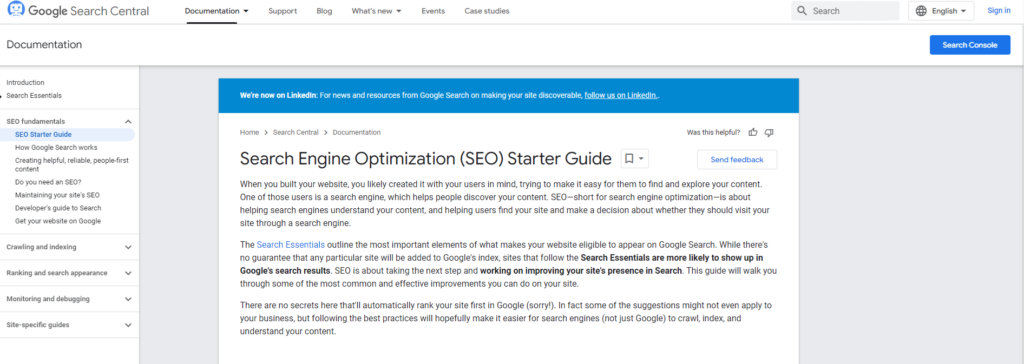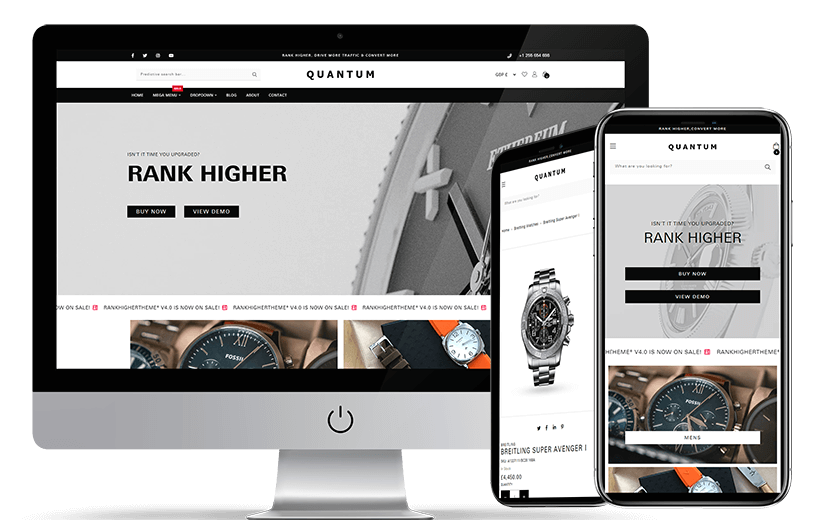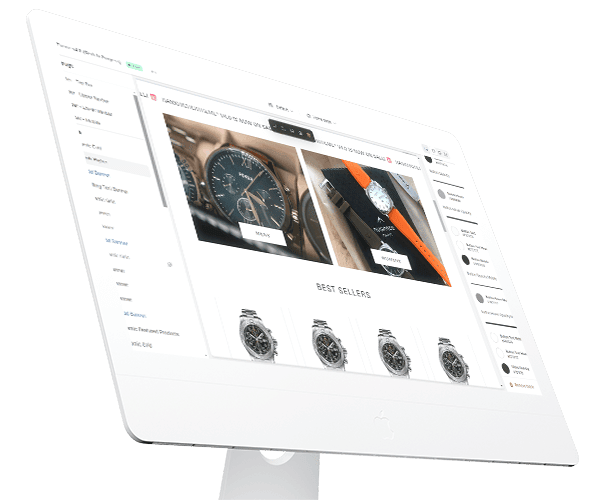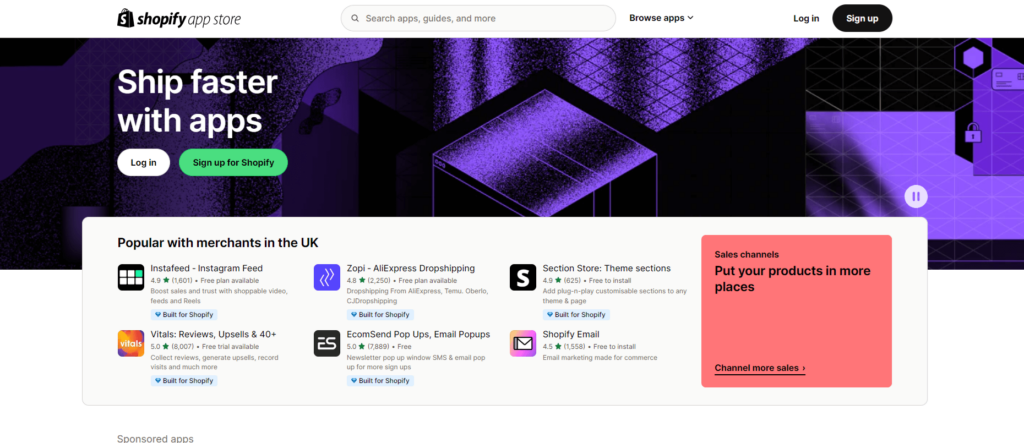5 Major Technical SEO Issues With Shopify And How To Fix Them

Shopify is one of the world’s most commonly used e-commerce platforms. According to Builtwith.com (December 2023) Shopify has 4,628,418 million live sites and has over 2.1 million daily active users (Yaguara.co).
Dive Deeper: Global Ecommerce Stats
Despite holding 16.36% of the world’s global e-commerce share (according to Yaguara), Shopify is known for its technical SEO issues which make it harder than most platforms to perform well organically in the search engines.
This article explores the reasons why, and more importantly, what you can do to overcome them to help your Shopify store rank higher in the search engines, drive more organic traffic and drive more organic conversions through the checkout.
What Is Search Engine Optimization (SEO).
Before we look at the issues, we need to understand what SEO is and why it is so important for ecommerce businesses.

Search Engine Optimization or SEO is a process that you can apply to your website to get your website’s pages indexed, crawled and ranked higher in the search engines, in the natural, or unpaid for search results
SEO is all about improving how easily search engines can find and understand your website. The better a search engine understands your website, the more likely it is to show your site to people searching for information related to what you offer.
Why is SEO So Important For An Ecommerce Business?
Apart from organic being your highest converting channel, SEO is crucial for an e-commerce business for a number of reasons:
- Attract potential customers: People typically use search engines to find products they want to buy. When your e-commerce website ranks higher in search results for relevant keywords, you’re more likely to get noticed by potential customers who are already interested in what you offer.
- Targeted traffic: SEO allows you to target users who are actively searching for products you sell. This means you’re attracting high-quality visitors who are more likely to convert into paying customers compared to random website visitors.
- Cost-effective: Unlike paid advertising, SEO is a long-term strategy that can deliver organic traffic without needing to constantly pay for clicks or impressions.
- Builds trust and credibility: Ranking well in search results can enhance your brand’s credibility and make you appear more trustworthy to potential customers.
- Long-lasting benefits: Unlike some marketing tactics, SEO benefits are long-lasting. Once you’ve optimized your website and achieved a high ranking, you can continue to enjoy the benefits for a long time to come.
In short, SEO is an essential tool for e-commerce businesses to drive traffic, attract potential customers, and ultimately boost sales and revenue.
To what extent you can optimize your store depends on the ecommerce platform you are using.
Every platform is unique and comes with its own SEO limitations and Shopify is no different.
Knowing what they are, and more importantly, how to fix them (or at least implementing workarounds) can significantly boost your organic rankings, traffic and conversions.
Here are the most common technical SEO issues with Shopify and perhaps why your store is not performing as well as it should be in the search engines:
1 – Dictated To Hierarchical URL Structure

Unlike many other platforms, Shopify dictates your hierarchical URL structure and you can’t change or control it which isn’t ideal for ‘link equity’ or ‘page authority’ distribution.
Following a logical hierarchical structure for SEO is essential for Google to be able to crawl and index and rank all of your store’s web pages.
An e-commerce stores’ hierarchy should be like a champagne fountain at a wedding to allow this to happen. Following technical SEO best practices, a hierarchical structure should flow like this:
- domain.com
- domain.com/category/
- domain.com/category/sub-category
- domain.com/category/sub-category/product-name
If you delete any of the above levels in the hierarchical structure, good ecommerce platforms will redirect back to the parent category or subcategory which is ideal for crawling, indexing and ranking a full website.
Shopfiy’s URL structure is flat and looks like this:
- domain.com
- domain.com/collections/collection-name
- domain.com/collections/collection-name/products/product-name
What you’ll also find is that there are two URL’s for every product, a long URL and a short URL. If you delete collections/collection-name/ from the last URL above, you will see that you end up with a second product URL which looks like this:
- domain.com/products/product-name
To avoid product page duplication, Shopfiy ‘canonicalizes’ the long URL to the short URL. In layman’s terms, this means that Shopify tells Google (and other search engines) to ignore the long URL and only index the short URL in the search engines.
Deep Dive: Canonicalization
With Shopify, you’re stuck with their own flat hierarchical structure and it can’t be changed, which doesn’t help Google and other search engines as much as it could.
Collection pages are set to:
- /collections/collection-name
- A – /collections/collection-name/products/product-name
- B – /products/product-name/
Without the ability to create a subcategory off the root collection URL.
Product pages also have duplicate URLs although the longer URL [B] does canonical back to the parent product, alleviating the duplicate content issue and giving you the ability to have products in multiple ‘collections’ such as new in, sale, and standard collections without duplication.
Content pages on the site also have a /pages/page-name URL and blog post pages inherit a similar structure with /blogs/blog-tag/blog-post-title again, not ideal, but certainly not unmanageable.
You have to structure your Shopify store’s hierarchy differently from how you typically would.
How To Fix & Workarounds
Here are some ways to address these issues and improve your Shopify store’s organic performance:
Optimize URLs: While Shopify doesn’t allow for full hierarchical URLs (e.g., /furniture/sofas/leather-sofas), you can still optimize product and category URLs. Include relevant keywords and avoid unnecessary parameters.
Internal Linking: Create a strong internal linking structure to connect relevant pages. This helps search engines understand the relationships between your products and categories, mimicking a hierarchical structure. This will help pass link equity between collection pages and from collections pages down to product pages.
Utilize Collections: Collections function similarly to categories and can help group related products. Optimize collection names and descriptions with relevant keywords.
Schema Markup: Implement schema markup to provide richer information to search engines about your products. This can lead to richer search results and potentially improve click-through rates.
Consider Apps: Several Shopify apps can help with SEO tasks. These can include tools for managing redirects, broken link checking, and even some level of URL customization.
Theme Modifications (Advanced): For advanced users, consider working with a developer to modify your theme. This could allow for more control over URL structure and potentially even functionality for tag pages. However, this approach requires technical expertise.
Theme Choice: If you’d prefer to save the hassle or expense of re-engineering your theme, you could choose a highly optimized theme built by SEO experts to save you time, effort, money and resource from the offset. An example of such a theme would be RankHigherTheme®
Remember, while Shopify has limitations, you can still achieve good technical SEO with some workarounds and strategic implementation.
Here are some additional resources you might find helpful:
- Shopify SEO checklist: https://www.shopify.com/blog/seo-checklist-online-store
2 – Product Filter Pages Content & Meta Data Duplication
The ability to ‘filter’ products on a collection page is standard functionality expected on any e-commerce store and is essential for user experience [UX] and conversion rate.

You would never expect to land on a large fashion store’s page for shoes and not be able to filter them down by size, color, brand, and type.
This is by far the biggest SEO factor that hinders a Shopify store’s ability to perform well in the search engines.
A single collection page with no filters has the ability to be optimized to perfection via the Shopify content management system [CMS] with no problem at all.
But here’s the problem; Major duplication issues arise when product filters are added to collection pages with product tags.
Here’s a breakdown of the issue:
Dynamic URLs: When you apply filters on a Shopify collection page, the platform creates a new URL with parameters in the address bar. These URLs aren’t ideal for SEO because:
Duplicate Content: Each filtered view technically creates a new page with potentially thin content (just a filtered product list). Search engines might see these as duplicate versions of your main collection page.
Weak URLs: Filter URLs often lack descriptive keywords and focus on filter parameters, making them less informative to search engines.
Canonicalization Issues: While Shopify tries to address duplicates with canonical tags pointing to the main collection page, it might not be perfect. This can lead to confusion for search engines about which URL is the most important.
Here’s what these issues can mean for your SEO:
- Lower Rankings: Search engines might struggle to understand the relationship between filtered pages and the main collection. This can lead to lower rankings for both the filtered pages and the main collection page.
- Wasted Crawl Budget: Search engines have a limited budget for crawling websites. If they spend too much time crawling thin, filtered pages, they might miss crawling more important parts of your site.
It’s important to note that filter functionality is crucial for user experience in an e-commerce store. You don’t want to remove filters altogether. However, there are ways to mitigate the SEO impact.
Standard ‘sort’ filters such as A-Z, Price High to Low are not the issue here as these ‘sort’ query string URLs are dealt with by canonicalization back to the root collection page to avoid duplication issues and penalties.
Shopify uses a built-in product ‘tagging’ system to arrange collections of products in filterable results in the sidebar such as size, product type, color, etc.
These ‘filter link’ URLs are dynamically generated by the platform and aren’t accessible or editable via the Shopify CMS so 1000’s and 1000’s duplication issues occur instantaneously as soon as you start adding filters to your theme, causing major keyword, metadata, and content duplication issues.
The good Shopify product filter apps in the App Store simply canonical the filter page URL back to the collection page parent. This method BLOCKS your filter pages from the search engines altogether.
Yes, this solves the issue of duplication, but themes using these types of Sy product filter apps are missing out on thousands and thousands of additional URLs that could be indexed in the search engines driving more traffic and revenue.
The BAD product filter apps don’t even know the SEO problem exists and their filter pages cause mass duplications of the store root collection pages which seriously harms SEO.
Most if not all Shopify theme designers and theme developers build filter systems without understanding the implications they have on the store’s ability to perform in the search engines.
How To Fix & Workarounds
It’s important to note that filter functionality is crucial for user experience in an e-commerce store. You don’t want to remove filters altogether. However, there are ways to mitigate the SEO impact:
Utilize Canonical Tags: Ensure Shopify’s canonical tags are set up correctly to point filtered pages to the main collection page.
Consider SEO-friendly Filter Apps: Some Shopify apps can help manage filters by using AJAX or JSON to update product listings without creating new URLs in the address bar or choose the only theme in the world which has fully optimizable product filter pages: RankHigherTheme®
Focus on Main Collection Page: Optimize the main collection page with relevant keywords and high-quality content to ensure it remains strong in search results.
By implementing these strategies, you can maintain user-friendly filters while minimizing the negative SEO impact on your Shopify store.
3 – Shopify Themes

Unfortunately, not all Shopify themes are created equal when it comes to SEO. While a theme might look great aesthetically, it could be hindering your organic performance in search results. Here are some red flags to watch out for when choosing a Shopify theme:
Slow Loading Speed: Speed is a major ranking factor for search engines. Themes with excessive animations, large image files, or unoptimized code can significantly slow down your website.
Limited Content Editing Options: You want a theme that allows you to easily edit product descriptions, meta descriptions, and title tags. These elements are crucial for SEO and need to be optimized for relevant keywords.
Poor Mobile Responsiveness: Mobile-friendliness is essential for SEO in today’s mobile-first world. A theme that doesn’t adapt well to different screen sizes will not only hurt your SEO but also user experience.
Non-existent Internal Linking Functionality: Internal linking helps search engines understand the structure and hierarchy of your website. A theme that lacks options for internal linking makes it difficult to optimize this aspect of your SEO.
Limited Schema Markup Support: Schema markup provides richer information to search engines about your products. Themes that don’t allow for easy implementation of schema markup are missing out on potential SEO benefits.
Confusing Navigation: A well-structured and clear navigation menu is important for both users and search engines. Themes with overly complex or confusing navigation can make it difficult for users to find what they’re looking for and for search engines to crawl your website effectively.
Pre-built Content Focused on Placeholders: While some themes offer pre-built content sections, these might be filled with generic placeholder text. You’ll need to replace this with high-quality, keyword-rich content to improve SEO.
It’s important to remember that even a well-designed theme might require some customization to be truly SEO-friendly. Ideally, look for themes that are specifically designed with SEO in mind and offer features like fast loading times, easy content editing, and schema markup support.
How To Fix & Workarounds
Here are some additional tips for choosing an SEO-friendly Shopify theme:
Read Reviews, Ratings and Case Studies: See what other users have to say about a theme’s SEO capabilities and ability to perform in the search before you buy. See example case studies here.
Check for Demo Sites: Many themes offer demo sites where you can test out the functionality and speed of the theme. Run demos through PageSpeedInsights to check their performance and compare themes.
Consider Paid Themes: While there are many free themes available, paid themes often offer more features and better support, which can be much more beneficial for SEO.
By keeping these factors in mind, you can choose a Shopify theme that helps your store rank higher in search results and achieve better organic performance.
4 – Limited Image Optimization

Shopify images are delivered through their own Content Distribution Network aka CDN. This limits the ability to fully optimize image file names.
Check your stores image URLs to see for yourself:
- Go to a product page on your store
- Hover your mouse over a product image and right click and click inspect
- In the right hand corner of your screen, you will see a highlighted section of code
- Right click on the highlighted url and click open in new tab
- View long URL in your browser – it will look like this:
As you can see, this URL cannot be optimized correctly to a much shorter URL image name such as breitling-super-avenger.
Shopify offers some image optimization features, but it does have limitations compared to a fully manual approach. Here’s a breakdown of where else Shopify falls short:
Limited Control Over Compression:
Shopify automatically compresses images upon upload, but you don’t have control over the compression level. This means you can’t fine-tune the balance between image quality and file size.
Focus on General Optimization:
Shopify’s automatic compression might not be ideal for every image. For instance, it might be too aggressive for detailed product photos, leading to a slight loss of quality.
No Resizing Before Upload:
Shopify allows uploading various image sizes, but it won’t resize them automatically to fit your theme’s layout. Uploading oversized images will still slow down your website’s loading speed.
Lacks Advanced Techniques:
Shopify doesn’t support advanced image optimization techniques like lossless compression or using WebP image format (which offers superior compression compared to JPEG).
Potential Color Profile Issues:
Shopify might strip out the color profile from uploaded images, leading to slight color variations upon display.
Here’s how these limitations can affect your store:
- Slower Loading Speeds: Large, unoptimized images can significantly slow down your website, hurting SEO and user experience.
- Compromised Image Quality: Shopify’s automatic compression might affect the visual quality of your product photos, impacting conversions.
- Less Control Over Image Display: Without control over color profiles, you might encounter slight variations in how your images appear on different devices.
How To Fix & Workarounds
Overcoming Shopify’s Image Optimization Limitations:
Pre-Optimize Images: Resize and compress your images using third-party tools before uploading them to Shopify. This allows you to find the optimal balance between quality and file size. A good theme provider will show you the correct image sizes to use like here.
Consider Apps: Several Shopify apps can help with image optimization, offering features like automatic resizing and advanced compression techniques. This one is free: TinyJpg
Focus on High-Quality Originals: Start with high-resolution images to ensure quality even after some compression by Shopify.
Add ALT = tags to Every Image: Adding alt=tags to every image can help Google and other search engines determine exactly what the image is.
By understanding Shopify’s limitations and taking these steps, you can create a workflow that delivers optimized images for your Shopify store.
5 – Shopify Apps
No two ecommerce business models are the same and with Shopify, you need to add the necessary apps to get your store to do exactly what you want it to do.

Cost for apps range from free, all the way up to $599 per month depending on the size of your store and or your turnover.
Shopify apps, while offering a vast array of functionalities to extend your store’s capabilities, can indeed become culprits for hurting your technical SEO. Here’s a deep dive into why:
Performance Issues:
Increased Load Time: Many apps add extra code and resources to your store’s theme. This can significantly slow down page loading speeds, especially if you have multiple apps installed. Search engines prioritize fast-loading websites in their rankings.
Unoptimized Scripts: Some apps might include poorly written or unoptimized Javascript or CSS files. These can lead to rendering issues and slow down page load times.
Content and Indexing Issues:
Duplicate Content: Certain apps might generate duplicate content on your store. For example, a product review app might create separate pages for reviews, which can be seen as duplicates of your product pages by search engines. This can dilute the value of your original content and confuse search engines about which page to index.
Broken Internal Linking: Apps that modify your store’s navigation or product pages can break existing internal links. This disrupts the flow of crawl traffic for search engines and makes it harder for them to understand the structure of your website.
Injected Code and Meta Data Issues: Some apps might inject code or modify meta descriptions in a way that isn’t SEO-friendly. This can make your content less relevant to search engine queries and hinder your organic ranking potential.
Crawlability and Indexation Issues:
Unintended Robots.txt Blocking: Apps might modify your robots.txt file, which controls how search engines crawl your website. This could unintentionally block search engines from indexing important pages on your store.
Infinite Scrolling Issues: Some apps that use infinite scrolling to display products can make it difficult for search engines to properly index all your products. Search engines rely on clear page structures to understand your content.
Additional Considerations:
App Maintenance and Updates: Outdated or poorly maintained apps can introduce security vulnerabilities and compatibility issues with your theme or Shopify’s core platform. This can lead to unexpected behavior and potentially harm your SEO.
App Dependency and Removal: If you rely on an app for a core functionality and then decide to remove it, you might be left with broken code or missing features within your theme. This can take time and effort to clean up and could negatively impact your SEO during the transition.
How To Fix & Workarounds
Minimizing the technical SEO Damage of apps.
App Audits: Regularly audit your installed apps to assess their impact on website performance and SEO. Consider removing apps that are no longer essential or have known SEO drawbacks.
Prioritize Lightweight Apps: Look for apps that are known to be well-coded and lightweight. Research user reviews and ratings to get a sense of an app’s potential impact on performance.
Test Before Installation: If possible, try out an app on a development store before installing it on your live site. This allows you to identify any potential SEO issues before they affect your ranking.
Stay Updated: Keep your Shopify apps updated with the latest versions. Updates often include bug fixes and performance improvements that can benefit your SEO.
Consider Alternatives: There might be alternative solutions to achieve the same functionality without relying on apps. Explore native Shopify features or consider working with a developer for custom solutions that don’t compromise SEO.
Upgrade to Shopify 2.0: Shopify 2.0 deals with apps much better in terms of dealing with redundant or obsolete code. Click this link to learn more about the benefits of Shopify 2.0.
By being mindful of these potential technical SEO drawbacks and taking proactive steps, you can leverage the benefits of Shopify apps while minimizing the harm to your store’s technical SEO.
Remember, a clean, well-optimized store with a focus on fast loading speeds and clear content structure is always the best recipe for ranking higher in search results.
In Conclusion: Mastering SEO for Your Shopify Store
Shopify offers a powerful platform for building your e-commerce empire, but maximizing your organic reach and performance requires a keen understanding of its SEO issues and how to fix or overcome them.
While Shopify itself offers a solid foundation, you’ll need to strategically address its inherent limitations and potential pitfalls to truly shine in search results.
Pay particular attention to:
Hierarchical Structure – the need to pass link equity and page authority in other ways
Product Filters – be aware of the good themes and apps and the bad ones
Theme Choice – Choose an SEO theme based on performance tools
Image Optimization – optimize your images as best you can in terms of size, image optimization tools and alt–= tags
App Management & Control – choose and then test your apps wisely!
Stick to the methods offered in this article and boost your organic sales!